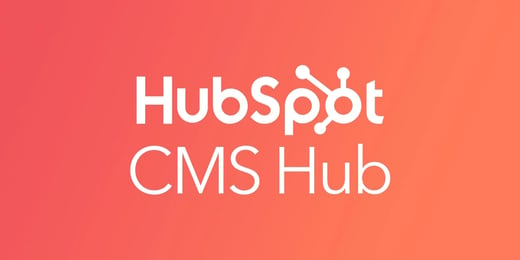How to maximise the performance of your website with HubSpot's Content Management System (CMS) to achieve your organisation's goals.
As a web administrator for websites based on the HubSpot CMS, you are responsible for ensuring that content is managed and optimised efficiently. This allows you to utilise the full potential of the platform:
Familiarise yourself with the HubSpot CMS
It is crucial to fully understand the HubSpot platform, including its features, tools and integrations. This includes the dashboard, content management, marketing automation, sales and customer service tools, and analytics. The better you understand the platform, the more effectively you can use it to manage and optimise your website.
Create customised templates
The HubSpot CMS offers a high degree of flexibility to create custom modules and templates that are precisely tailored to the individual requirements of your website. These custom elements can fulfil a variety of purposes, from displaying specific content to implementing interactive features or special design elements. Instead of having to start from scratch every time you want to create a new page or make changes, you can fall back on your modules and templates to save time and effort. This allows you to create content faster and make your website more agile.
Optimise the content for mobile devices
With the increasing number of mobile internet users, it is essential that your website works well on different devices and screen sizes. This requires not only a responsive design, but also the optimisation of loading times and the adaptation of content to mobile user needs.

Take the loading times into account
The loading time of your website has a significant impact on user experience and search engine rankings. Optimise your pages by compressing images and videos, using caching (temporary storage of certain data) and minimising unnecessary scripts to ensure that your website loads quickly.
Organise activities via HubSpot CMS
The HubSpot CMS content module allows you to easily create, edit and manage content without the need for technical knowledge. You can combine different content types such as text, images, videos, forms and more to create engaging and targeted content.
Implement SEO best practices
By targeting your content to these keywords and integrating them into your headings, paragraphs, meta descriptions and other areas of your website, you can increase the chances of your page appearing in search results for these keywords. Another important SEO practice is the optimisation of meta tags, especially the title tag and meta description. By including relevant keywords in these meta tags and making them appealing, you can increase the click-through rate and drive more traffic to your website. The HubSpot CMS offers a variety of SEO tools. These allow you to optimise your website for search engines by giving you insights into your keywords, rankings, backlinks and other important SEO metrics. You can also receive recommendations and optimisation suggestions to continuously improve your SEO strategy and increase your visibility in search results.
Integrate conversion tools
Conversion tools such as forms, CTAs (call-to-actions) and landing pages, which you can easily integrate into the HubSpot CMS using a
marketing automation solution, are essential elements of a successful marketing strategy as they help to convert visitors to your website into leads and ultimately into customers. These tools are designed to capture visitors' attention, pique their interest and persuade them to take a specific action, such as filling out a contact form, downloading an e-book or completing a purchase. To maximise the effectiveness of these conversion tools, it's important to place them strategically on your website. This means that you should place them in places where they are easily recognised by visitors and encourage them to take an action.
Personalise your contents
Personalising content is an important step in improving the user experience on your website and increasing conversion rates. By personalising content based on the individual interests, behaviour and preferences of your visitors, you can create a more personal and relevant experience for each user. To do this, it is important to collect and analyse data about the behaviour and interests of your visitors. This can be done by using analytics tools such as Google Analytics or HubSpot's integrated analytics features. By analysing data such as page views, dwell time, click behaviour and demographic information, you can develop a better understanding of who your visitors are and what interests them.
Test and optimise regularly
Through regular testing and optimisation, you can continuously improve the performance of your website. Run A/B tests to compare different versions of your pages, analyse the results and make informed decisions to optimise conversion rates and other key metrics.
Update contents regularly
Keep your website up-to-date by regularly adding new content and updating existing content. This not only helps to increase the engagement rate, but also to improve your website's ranking in search engines and strengthen the authority of your website in your industry.
Optimise the meta tags
Optimising meta tags is a crucial step in ensuring that your website displays well in search results and encourages potential visitors to click on it. Meta tags such as the title, description and keywords play an important role in search engine optimisation (SEO) as they help search engines better understand the content and context of your pages. To optimise your meta tags, you should research relevant keywords and integrate them into your title, description and keywords. Make sure your meta tags are concise, meaningful and unique, and avoid keyword stuffing as this can negatively impact your pages in search results.
Set up 301 redirects
301 redirects are important to ensure that users and search engines can find your website, even if the URL structure changes. Set up 301 redirects from old URLs to new URLs to ensure that your visitors don't end up on error pages and that your search engine rankings are maintained.
Set up customised 404 pages
Custom
404 error pages help your visitors find their way around your website when they encounter non-existent pages. Make these pages appealing and provide useful links and information to improve the user experience and ensure your visitors stay on your website.
Integrate analysis tools
Analytics tools such as Google Analytics and HubSpot Analytics provide important insights into user behaviour, the performance of your website and the success of your marketing campaigns. Integrate these tools into your website and use the insights gained to make informed decisions and continuously optimise the performance of your website.
Take accessibility into consideration
Accessibility is an important aspect of ensuring that your website is accessible to all users, regardless of their abilities or limitations. Follow accessibility guidelines such as WCAG and implement appropriate measures to ensure an accessible user experience.
Implement rich media content
Rich media content such as videos, slideshows and interactive graphics can enhance the user experience and present complex information in an engaging way. Integrate this content into your website to capture visitors' attention and encourage them to spend more time on your site. Rich media content helps to improve the user experience by presenting content in a visually appealing and interactive way. Videos, slideshows and interactive graphics increase attention and boost engagement. This can help improve conversion rates and optimise the overall experience for your website visitors.
Integrate social media functions
Integrate social media features such as share buttons, follow buttons and embedded feeds to increase the reach of your content and encourage interaction with your users. Incorporating social media features is an effective strategy to encourage interaction with your visitors and make your content accessible to a wider audience. Social media has a huge reach and offers the opportunity to share your website content across multiple platforms, increasing the potential for more traffic and engagement.
As a web administrator, it is crucial to stay up to date with HubSpot CMS to ensure optimal performance and user experience. If you need assistance with any of the above, our experts at Thought Leader Systems are here to help.
We will help you to have not just a business card on the web, but a powerful sales platform that generates leads and revenue through conversions.
Get in touch with us!



